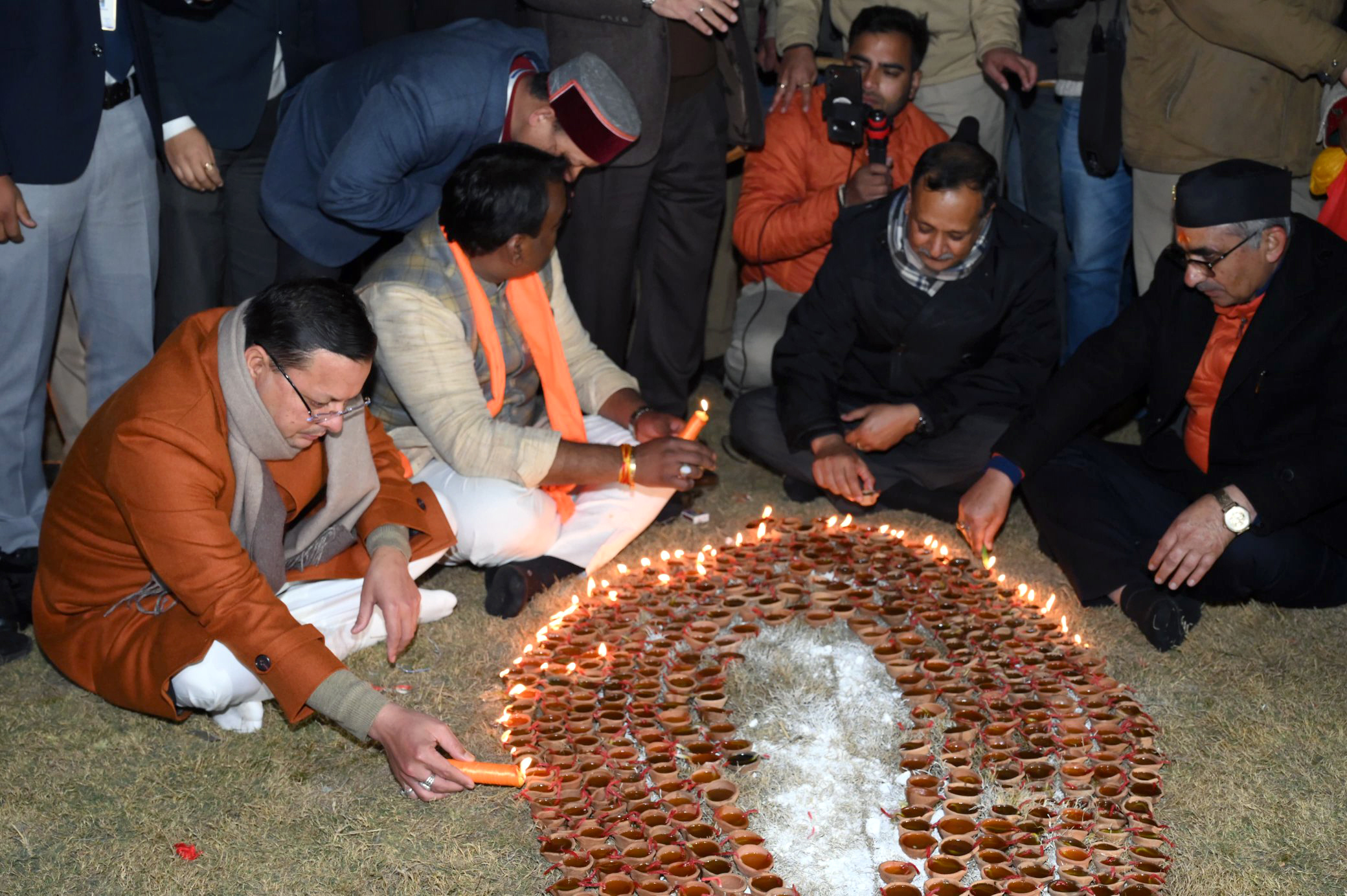
With the highly anticipated ‘Pran Pratishtha’ just hours away, Uttarakhand Chief Minister Pushkar Singh Dhami expressed his joy and reverence by offering prayers at the temple within his official residence. In reflecting on the significance of the moment, he remarked, “After 500 years of a long struggle and sacrifices of many Ram devotees, I am extremely elated to be a witness to this grand festival.” Following his prayers, CM Dhami also participated in ‘Gau Sewa.’
He further conveyed his elation, stating, “After 500 years of long struggle and sacrifices of many Ram devotees, I am extremely elated and happy to be a witness to this grand and divine festival. Ram belongs to every person and Ram is in every particle.” CM Dhami extended his prayers to Lord Ram, seeking prosperity for the people of the state and the well-being of Sanatanis worldwide.
Goa Chief Minister Pramod Sawant joined in the spiritual preparations by offering prayers at the Rudreshwar Temple in Panaji ahead of the Pran Pratishtha ceremony.
The scheduled ‘Pran Pratistha’ of Ram Lalla is set for Paush Shukla Kurma Dwadashi, Vikram Samvat 2080, on January 22. The day will commence with a morning puja, followed by the Pran Pratishtha of Ram Lalla in ‘Mrigashira Nakshatra’ between 12:30 pm and 1 pm. The ceremony will witness the presence of dignitaries including Prime Minister Narendra Modi, RSS Chief Mohan Bhagwat, Governor Anandiben Patel, and Chief Minister Yogi Adityanath.
Over 150 traditions and 50 tribal communities will converge at the Shri Ram Temple, marking a historic moment of diverse participation from residents of mountains, forests, coastal areas, islands, and more.
The temple, constructed in the traditional Nagara style, stands at a length of 380 feet (east-west), a width of 250 feet, and a height of 161 feet, supported by 392 pillars and 44 doors. The intricately sculpted pillars and walls depict Hindu deities, gods, and goddesses, with the main sanctum sanctorum housing the idol of Shri Ramlalla in the childhood form of Bhagwan Shri Ram.
The temple complex includes five Mandaps (Halls) – Nritya Mandap, Rang Mandap, Sabha Mandap, Prathana Mandap, and Kirtan Mandap. Nearby is the historic well, Sita koop, dating back to ancient times. In the southwestern part of the temple complex, at Kuber Tila, the ancient temple of Bhagwan Shiv has been restored, along with the installation of a statue of Jatayu.
Constructed with a 14-meter-thick layer of roller-compacted concrete (RCC) for the foundation, the temple exudes the appearance of artificial rock. Notably, traditional and indigenous technology has been employed in the construction, with no use of iron. The temple complex features essential facilities such as a sewage treatment plant, water treatment plant, water supply for fire safety, and an independent power station. The temple’s construction showcases a blend of traditional methods and advanced technology.